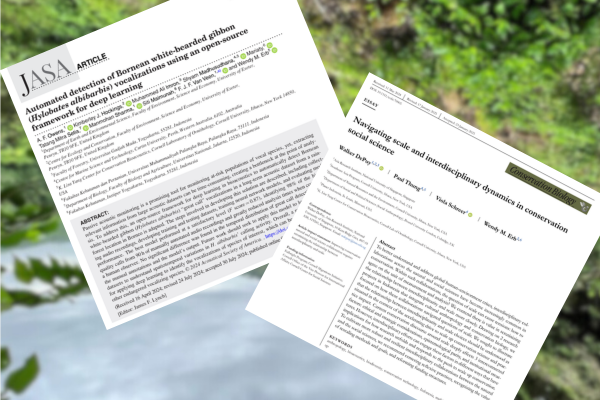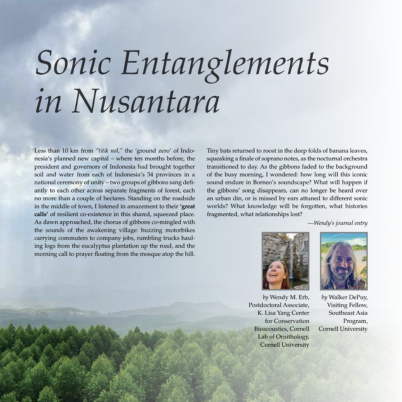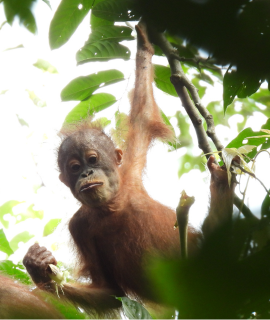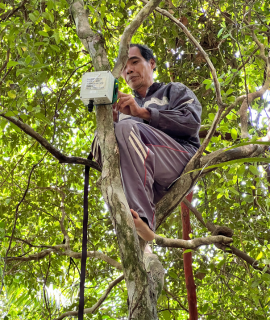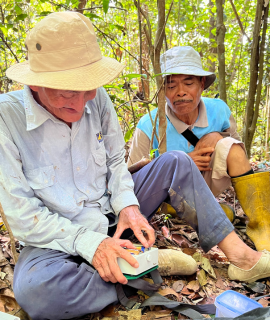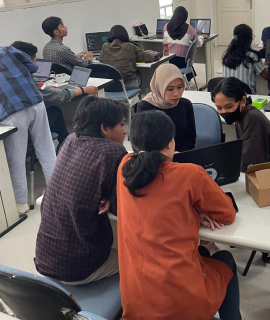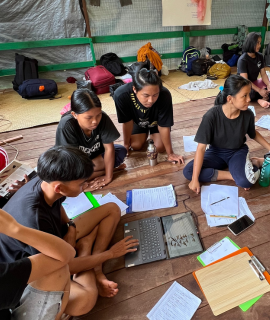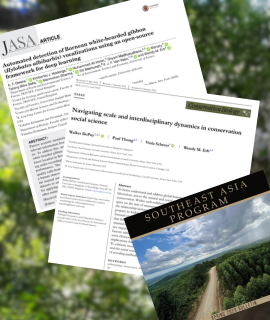Orangutan Behavior & Conservation
Most of the lowland forests of Central and East Kalimantan are threatened by fire, mining, agriculture, and timber activities. There is an urgent need to develop cost-effective methods to monitor ecological responses to anthropogenic change. Through long-term monitoring of behavior, ecology, bioacoustics, and health of Critically Endangered orangutans and other primates in the landscapes where we work, our research findings highlight the conservation and scientific value of these biodiverse forests.
Through strong partnerships across provinces, Suara Rimba aims to support the conservation of orangutans and their habitats by contributing valuable data about vulnerable populations and working closely with local communities to develop and deliver education and outreach programs.
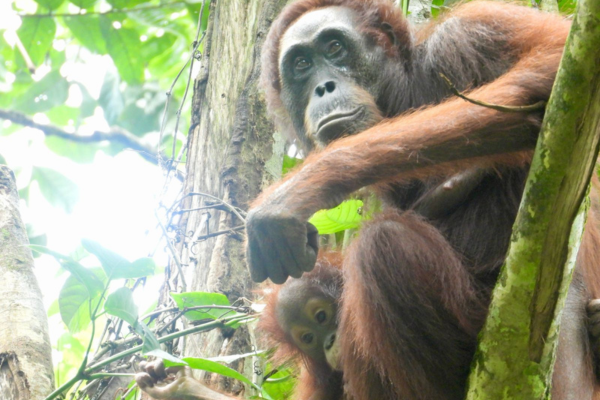

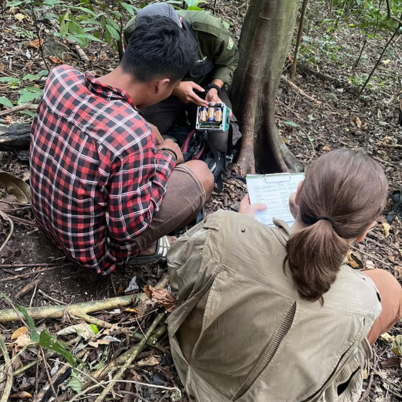
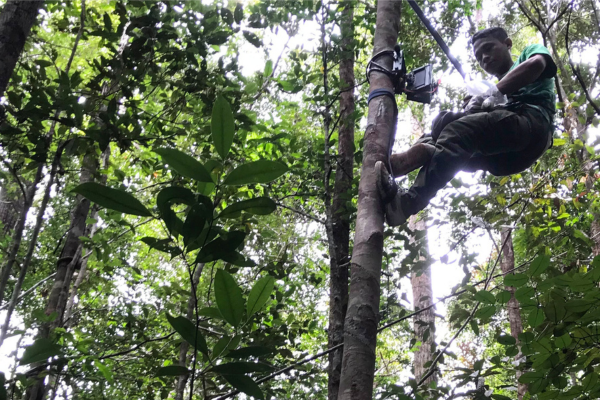
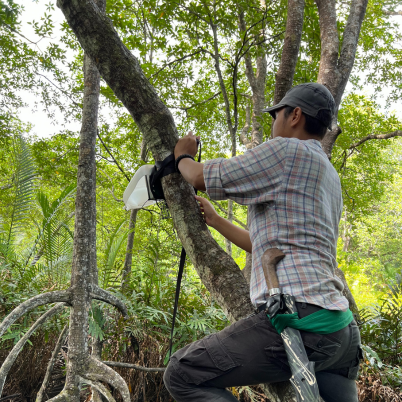
Biodiversity & Endangered Species Monitoring
Passive acoustic monitoring (PAM) is a remote sensing method that involves the deployment of autonomous recorders to collect data at large spatiotemporal scales. PAM can be used to study sounds from biological, geological, and human sources, and has been successfully applied to assess biodiversity and ecosystem health at ecologically relevant scales. We are employing PAM to monitor endangered species and their habitats at all of our project locations in Central and East Kalimantan. At each site, the threats and research targets are distinct.
Air quality and soundscapes across Borneo
Borneo's forests burn annually, producing toxic smoke that can cover a large region. The resulting air pollution, especially particulate matter, has major health consequences for humans, but little is known about how this haze affects wildlife behavior and sounds. Borneo experienced El Niño-driven wildfires in 2019 and 2023 that blanketed these forests in thick smoke. In 2025, with partners at Universitas Muhammadiyah Palangkaraya and the University of Leeds, we co-deployed acoustic recorders and air quality sensors that simultaneously monitor soundscapes and particulate matter, the first study of its kind. Our collaborative team will use the resulting data to study forest soundscapes across project locations - with a focus on a range of threatened primates, birds, herpetofauna, and insects - to understand the consequences of prolonged and repeated exposure to hazardous smoke for a range of taxonomic groups.
Integrative acoustic monitoring of Borneo’s endangered apes
The biologically rich tropical forests of Borneo are experiencing rapid and extensive degradation from industrial activities. Across the island, fragmented populations of endangered gibbons and orangutans are threatened by fires, hunting, urban development, and industrial agriculture. In three vulnerable landscapes in Central and East Kalimantan (Rungan, Kutai National Park, and Nusantara), with partners at Universitas Muhammadiyah Palangkaraya and Universitas Mulawarman, we have established long-term research projects integrating behavior, visual surveys, and passive acoustic monitoring to study the spatiotemporal dynamics in ape health and distribution.
Community-Centered Soundscape Studies
We use sound-based interdisciplinary research to monitor wildlife and engage local and Indigenous knowledge and knowledge-making.
Participatory monitoring of social-ecological change in Indonesia’s new capital
With community and university partners in East Kalimantan, Suara Rimba is working to capture perceptions about Indonesia’s new capital, map biodiversity across the landscape, and identify spaces of human-environment concern. Combining bioacoustics and anthropology, we are documenting the impacts of the new city on local forests, communities, and biodiversity. Our research approach includes the community-centered selection of monitoring sites in customary territories, soundscape-focused interviews, group listening sessions of forest recordings, and “soundwalks” with community partners to actively listen together to places in situ. These methods help identify various ways sound acts as a type of knowledge and listening as a form of knowledge-making.
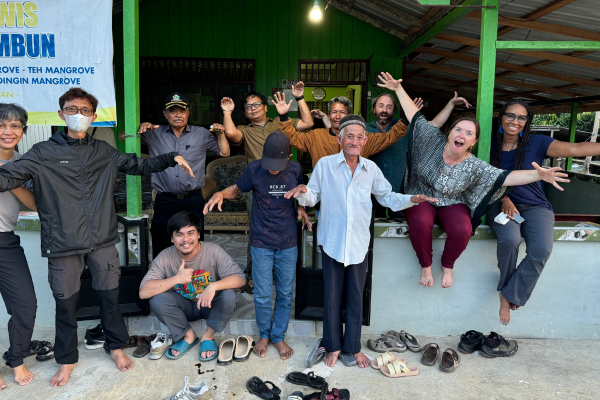
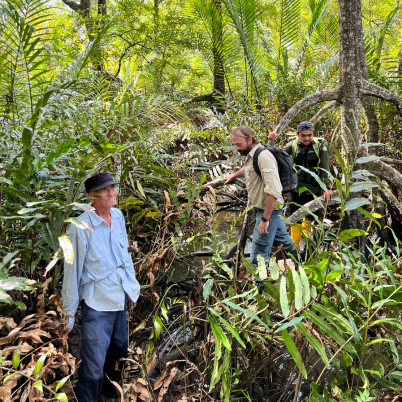
Training & Mentorship
In the field and in the lab, we’ve led dozens of workshops and training sessions about passive acoustic monitoring, from data collection and equipment maintenance to data management and analysis. Our training events typically span 2-3 days of hands-on activities, covering theory and background, study design, hardware and software practice, visualization and annotation, data management, and collaboration and co-creation practices. Participants typically include university faculty and students, NGO staff, and local community members who have a strong interest in applying passive acoustic monitoring to their research and conservation activities.
In East Kalimantan, our training workshops have targeted interested faculty and students in the Forestry Department at Universitas Mulawarman. We led several campus-based and field-based training events in 2022 and 2023, and provided data, training, and mentorship for four successful undergraduate student dissertations.
In Central Kalimantan, since 2019, we have led diverse training workshops that invite students, NGO practitioners, and local community members to participate and learn. In addition, we have spearheaded a “bioacoustics center” with faculty and students at Universitas Muhammadiyah Palangkaraya (Faculty of Agriculture and Forestry) and Universitas Palangka Raya (Faculty of Biology). For more than a year, we have trained and mentored six undergraduate students who will complete their dissertations this year.

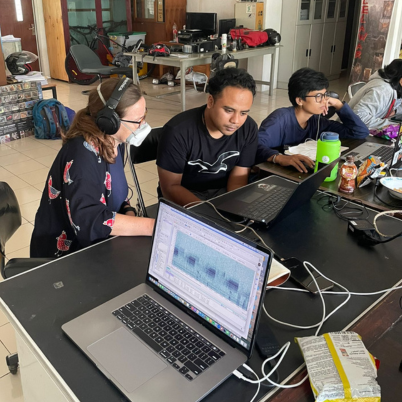
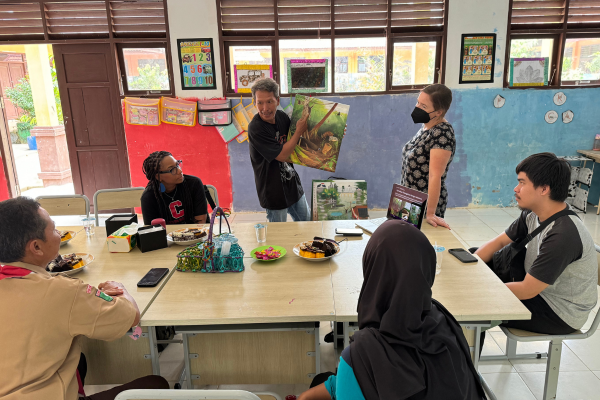
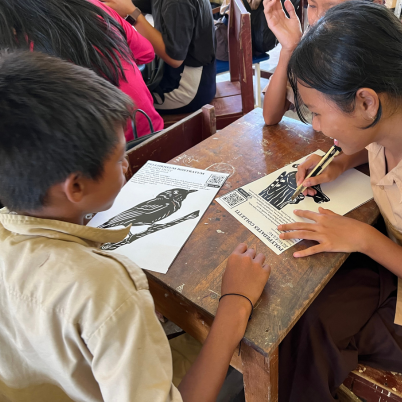
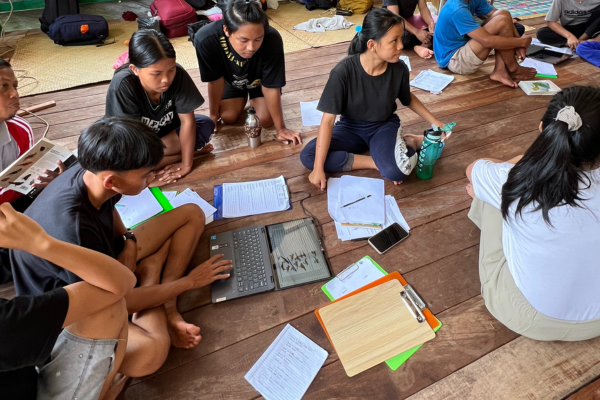
Outreach & Engagement
Beyond research, our project involves delivering customized programs to inform and engage audiences in partner communities, universities, and the broader public.
In universities, we have shared guest lectures and invited presentations on primate conservation, bioacoustics, and environmental anthropology. In 2024, our team launched a collaborative online international learning course for students at UNC Chapel Hill and Universitas Mulawarman to investigate Nusantara as a global environmental justice case study.
In communities, we work to develop deep trust and understanding with the people who share the forested landscapes where our research projects take place. Our programs are situated within the place-based culture and values of each community, and we frequently work with artists to help us translate science and connect with people through shared expression.
Bridging art and science to celebrate biocultural heritage
- In Nusantara, we bridged a collaboration between a visual artist at Cornell University and an Indigenous knowledge-holder in a front-line community to co-create three paintings that represent Nusantara’s past, present, and imagined future. We later delivered an educational curriculum inspired by these paintings and shared this program with local schools and government offices.
- In Mungku Baru, we partnered with a local art group, Borneo Art Play, to create an interactive and immersive program for the children of the Mungku Baru village. The event featured presentations about the science of bioacoustics, a workshop where participants created their own shadow puppets, choosing from one of 10 bioculturally important species from the local forest. Featuring local Dayak Ngaju names, the puppets were equipped with a barcode that students could scan to listen to each animal’s unique sounds. The main event was a customized puppet show (produced and performed by Borneo Art Play), with a story and puppets crafted specially for Mungku Baru: a tale of friendship between two locally cherished species: Kangkaput, the Indian cuckoo, and Gibby, the white-bearded gibbon. This art-science program was a huge hit with the children and was a powerful way to raise awareness and care about the biodiversity and rich natural sounds inhabiting this special forest.
RECENT Publications
- Anirudh, N. B., van Veen, F. J. F., Ripoll-Capilla, B., Buckley, B. J. W., Erb, W.M., Niun, M. A., … Harrison, M. E. (2025). Lowland heath forests of Indonesian Borneo: ecological value and conservation challenges. Journal of Tropical Ecology, 41, e19.
- DePuy, W., Thung, P., Schreer, V., and Erb, W.M. (2025). Navigating scale and interdisciplinary dynamics in conservation social science. Conservation Biology. 39: e70005.
- Owens, A. F., Hockings, K. J., Imron, M. A., Madhusudhana, S., Mariaty, Setia, T. M., Sharma, M., Maimunah, S., Van Veen, F. J. F., and Erb, W. M. (2024). Automated detection of Bornean white-bearded gibbon (Hylobates albibarbis) vocalizations using an open-source framework for deep learning. The Journal of the Acoustical Society of America. 156: 1623-1632.
- Erb, W., and W. DePuy (2023). Hearing the forest through the trees: Sonic entanglements in Nusantara. Southeast Asia Program Bulletin Spring 2023:16–21
